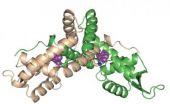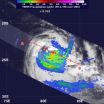(Press-News.org) NEW YORK – February 13, 2013 – EcoHealth Alliance, the nonprofit organization that focuses on local conservation and global health issues, announced new research focused on the rapid identification of disease outbreaks in the peer reviewed publication, Journal of the Royal Society Interface. The article, authored by leading scientists in the fields of emerging disease ecology, biomathematics, computational biology and bioinformatics, shows how network theory can be used to identify outbreaks of unidentified diseases. The strategy builds on the wealth of online surveillance data and increased reporting and tracking of emerging infectious diseases via the Internet. Pandemics often first emerge in remote regions, and early in their development, the identity of the cause is often unknown. In many cases these events turn out to be known diseases that don't require emergency action, and cutting through the clutter and uncertainty to determine which outbreaks are important is a critical challenge.
The newly released research used a simple set of data collected at the earliest stages of an outbreak such as symptoms, time of year, and percentage of the population that died (the case fatality rate). This information was collected from 125 reports of outbreaks on 10 known infectious diseases causing encephalitis (brain or neural infection) in South Asia – a known 'hotspot' for new disease outbreaks. The data was analyzed to examine whether outbreaks of the same disease clustered together, based on basic outbreak properties (symptoms, timing and case fatality rate). Results showed that diseases such as Nipah virus – an emerging and very lethal disease – showed distinct characteristic patterns within such a network and clustered separately to other more established diseases such as malaria and Japanese encephalitis. The team was then able to take outbreaks caused by unknown pathogens and provide a probable diagnosis for these 'mystery diseases'. The initial analysis shows a promising advantage to aid in predicting and preventing possible pandemic diseases that can result in devastating losses in life and global economic crises. "This application of network theory is exciting not only because it provides a fast, affordable method for associating undiagnosed outbreaks with a set of most likely known diseases, but perhaps most importantly because it provides a method for researchers to work with public health experts to identify potentially novel pathogen threats, as these agents will not fall into any of the known disease clusters and therefore can be easily identified," said Dr. Tiffany Bogich, Princeton University.
Often, new pandemics start as a few cases of an unknown disease in a remote region of the globe. After a few weeks or months depending on conditions, the disease continues to spread through the rapid movement of global travelers. As with the SARS outbreak, the virus incubated for a few months in China before it spread to Hong Kong, Canada and other points around the world. In 2009, the outbreak of H1N1 'Swine' flu circulated in Mexico for at least a couple of months before it was discovered as a real threat to public health. When Nipah virus caused outbreaks in pigs and farm workers in Malaysia, many health officials thought the disease was symptomatic of Japanese encephalitis. All of these examples illustrate the need to identify highly infectious diseases at the very earliest stage – when there are just a few cases – allowing public health officials to thwart these new viruses from spreading globally.
"This research may be critical to rapidly deciding which outbreaks are something completely novel and have pandemic potential, rather than a repeat outbreak of a known pathogen. It allows public health agencies to target their resources in the most efficient way, and helps protect us from new emerging diseases, which often erupt in remote corners of the Earth where it is sometimes very difficult to obtain vital information, let alone biological samples to test for various pathogens," said Dr. Peter Daszak, corresponding author and President of EcoHealth Alliance. "Another aspect that we are looking at is using this tool to pinpoint possible bio-terrorism, such an act will produce immediate symptoms that are unusual, and would likely light up on our network analysis," added Dr. Daszak.
###
This study was funded by United States Agency for International Development (USAID) Emerging Pandemic Threats PREDICT, National Institutes of Health/National Science Foundation RAPID 'Ecology and Evolution of Infectious Diseases' from the John E. Fogarty International Center, DTRA, the Rockefeller Foundation, and the New York Community Trust.
About EcoHealth Alliance
Building on over 40 years of groundbreaking science, EcoHealth Alliance is a global, nonprofit organization dedicated to protecting wildlife and safeguarding human health from the emergence of disease. The organization develops ways to combat the effects of damaged ecosystems on human and wildlife health. Using environmental and health data covering the past 60 years, EcoHealth Alliance scientists created the first-ever, global disease hotspots map that identified at-risk regions, to help predict and prevent the next pandemic crisis. That work is the foundation of EcoHealth Alliance's rigorous, science-based approach, focused at the intersection of the environment, health, and capacity building. Working in the U.S. and more than 20 countries worldwide, EcoHealth Alliance's strength is founded on innovations in research, training, global partnerships, and policy initiatives. For more information, please visit www.ecohealthalliance.org. END
New methodology to predict pandemics
Current research uses smart surveillance to rapidly identify emerging disease threats
2013-02-15
ELSE PRESS RELEASES FROM THIS DATE:
Quantum cryptography put to work for electric grid security
2013-02-15
LOS ALAMOS, N.M., Feb. 14, 2013—A Los Alamos National Laboratory quantum cryptography (QC) team has successfully completed the first-ever demonstration of securing control data for electric grids using quantum cryptography.
The demonstration was performed in the electric grid test bed that is part of the Trustworthy Cyber Infrastructure for the Power Grid (TCIPG) project at the University of Illinois Urbana-Champaign (UIUC) that was set up under the Department of Energy's Cyber Security for Energy Delivery Systems program in the Office of Electricity Delivery and Energy ...
A microbial biorefinery provides new insight into how bacteria regulate genes
2013-02-15
PROVIDENCE, R.I. [Brown University] — Microorganisms that can break down plant biomass into the precursors of biodiesel or other commodity chemicals might one day be used to produce alternatives to petroleum. But the potential of this "biorefinery" technology is limited by the fact that most microorganisms cannot break down lignin, a highly stable polymer that makes up as much as a third of plant biomass.
Streptomyces bacteria are among few microorganisms known to degrade and consume lignin. Now a group of researchers at Brown University has unlocked the genetic and molecular ...
NASA's Fermi proves supernova remnants produce cosmic rays
2013-02-15
A new study using observations from NASA's Fermi Gamma-ray Space Telescope reveals the first clear-cut evidence the expanding debris of exploded stars produces some of the fastest-moving matter in the universe. This discovery is a major step toward understanding the origin of cosmic rays, one of Fermi's primary mission goals.
"Scientists have been trying to find the sources of high-energy cosmic rays since their discovery a century ago," said Elizabeth Hays, a member of the research team and Fermi deputy project scientist at NASA's Goddard Space Flight Center in Greenbelt, ...
Researchers discover breakthrough in ovarian cancer
2013-02-15
(Phoenix, AZ Feb. 14, 2014) -- Researchers at The University of Arizona Cancer Center at St. Joseph's Hospital and Medical Center in Phoenix have discovered that many women with low-grade serous carcinoma of the ovary or peritoneum have seen their tumors stabilize or shrink after taking a regular dose of the compound selumetinib.
The findings, published in the Feb. 14 edition of The Lancet Oncology, show that selumetinib targets a mutation in the MAPK pathway for patients with low-grade serous carcinoma, allowing for treatment on previously chemoresistant tumors.
"This ...
NASA satellite sees Cyclone Gino's rainfall shoved southward
2013-02-15
NASA's Tropical Rainfall Measuring Mission satellite known as TRMM measured Cyclone Gino's rainfall from space and saw the bulk of precipitation was south of the center. Gino's rainfall is being pushed away from the center by vertical wind shear.
TRMM flew over Cyclone Gino on Thursday, Feb. 14 at 0806 UTC (3:06 a.m. EST) and measured the rainfall rates occurring throughout the storm. The bulk of the rainfall stretched from south to southeast of the center. The heaviest rain was falling at a rate of 2 inches (50 mm) per hour southeast of the center, and scattered throughout ...
Prevention efforts focused on youth reduce prescription abuse into adulthood
2013-02-15
Middle school students from small towns and rural communities who received any of three community-based prevention programs were less likely to abuse prescription medications in late adolescence and young adulthood. The research, published today in the American Journal of Public Health, was funded by the National Institute on Drug Abuse (NIDA), the National Institute on Alcohol Abuse and Alcoholism, and the National Institute of Mental Health, all components of the National Institutes of Health.
"Prescription medications are beneficial when used as prescribed to treat ...
Research finds promising approaches to prevent Latino childhood obesity
2013-02-15
San Diego, CA, February 15, 2013 – Guided grocery store trips, menu labeling at restaurants, community gardens, and video-game-based exercise programs are among several promising, culturally appropriate ways to prevent obesity among Latino children, according to a new collection of studies from Salud America! The Robert Wood Johnson Foundation Research Network to Prevent Obesity Among Latino Children published in a supplement to the March issue of the American Journal of Preventive Medicine.
Salud America! is a national network of researchers, advocates, and policymakers ...
Moffitt researchers find potential new therapeutic target for treating non-small cell lung cancer
2013-02-15
Researchers at Moffitt Cancer Center have found a potential targeted therapy for patients with tobacco-associated non-small cell lung cancer. It is based on the newly identified oncogene IKBKE, which helps regulate immune response.
The study appeared in the Feb. 13 online issue of Oncogene.
The IKBKE gene is part of a family of enzyme complexes involved in increasing cellular inflammation. IKBKE overexpression has been associated with breast and prostate cancers. However, it had not been linked to environmental carcinogen, such as tobacco smoke, until now.
Tobacco ...
Can police withdraw blood from DWI suspects without a warrant?
2013-02-15
Can police withdraw blood from DWI suspects without a warrant?
Article provided by Ellis & Ortega, LLC
Visit us at http://www.theortegalawgroup.com
In early 2013, the Supreme Court of the United States will hear a case regarding the constitutionality of law enforcement drawing blood from a drunken driving suspect without first obtaining a warrant. At the heart of the case is whether blood tests without a warrant violate the Fourth Amendment's protection from unreasonable search and seizure.
The history of the Supreme Court case
The case the Supreme Court ...
Elder abuse in California is no laughing matter
2013-02-15
Elder abuse in California is no laughing matter
Article provided by The Law Office of Kevin P. Kane, Esq.
Visit us at http://www.kevinpkane.com
Elder care abuse is a serious issue in California that can manifest as both physical and financial harm. An experienced attorney can help create a plan that will minimize the risk of harm and can fight for damages if the harm has already occurred.
What are the warning signs?
Elder abuse is an umbrella term for a whole host of different reproachable behavior. That said, there are some warning signs that can alert someone ...
LAST 30 PRESS RELEASES:
Geometry shapes life
A CRISPR screen reveals many previously unrecognized genes required for brain development and a new neurodevelopmental disorder
Hot flush treatment has anti-breast cancer activity, study finds
Securing AI systems against growing cybersecurity threats
Longest observation of an active solar region
Why nail-biting, procrastination and other self-sabotaging behaviors are rooted in survival instincts
Regional variations in mechanical properties of porcine leptomeninges
Artificial empathy in therapy and healthcare: advancements in interpersonal interaction technologies
Why some brains switch gears more efficiently than others
UVA’s Jundong Li wins ICDM’S 2025 Tao Li Award for data mining, machine learning
UVA’s low-power, high-performance computer power player Mircea Stan earns National Academy of Inventors fellowship
Not playing by the rules: USU researcher explores filamentous algae dynamics in rivers
Do our body clocks influence our risk of dementia?
Anthropologists offer new evidence of bipedalism in long-debated fossil discovery
Safer receipt paper from wood
Dosage-sensitive genes suggest no whole-genome duplications in ancestral angiosperm
First ancient human herpesvirus genomes document their deep history with humans
Why Some Bacteria Survive Antibiotics and How to Stop Them - New study reveals that bacteria can survive antibiotic treatment through two fundamentally different “shutdown modes”
UCLA study links scar healing to dangerous placenta condition
CHANGE-seq-BE finds off-target changes in the genome from base editors
The Journal of Nuclear Medicine Ahead-of-Print Tip Sheet: January 2, 2026
Delayed or absent first dose of measles, mumps, and rubella vaccination
Trends in US preterm birth rates by household income and race and ethnicity
Study identifies potential biomarker linked to progression and brain inflammation in multiple sclerosis
Many mothers in Norway do not show up for postnatal check-ups
Researchers want to find out why quick clay is so unstable
Superradiant spins show teamwork at the quantum scale
Cleveland Clinic Research links tumor bacteria to immunotherapy resistance in head and neck cancer
First Editorial of 2026: Resisting AI slop
Joint ground- and space-based observations reveal Saturn-mass rogue planet
[Press-News.org] New methodology to predict pandemicsCurrent research uses smart surveillance to rapidly identify emerging disease threats



